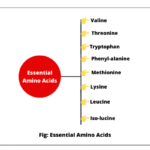What is Spectrum: Types of Spectrum
A spectrum is the impression or pattern formed on a screen when electromagnetic radiation of particular wavelengths is analyzed and dispersed using a prism or diffraction grating. In simple words, a series of coloured bands (wavelengths) produced when light is separated into its constituent wavelengths is called spectrum.
For example, when a white light is incident on a prism, a spectrum of different colours from red to violet is observed. Similarly, the hydrogen spectrum includes distinct series, such as the Lyman series, Balmer series, Paschen series, Brackett series, etc. each corresponding to specific transitions of electrons in a hydrogen atom.
Pure and Impure Spectrum
If each color gives a sharp and well-defined impression in the spectrum, a clear and distinct line spectrum is obtained. Such a spectrum is called a pure spectrum. To achieve a pure spectrum:
- The beam of light incident on the dispersing element, such as a prism or diffraction grating must be parallel or collimated.
- The dispersed light must be focused such that all rays of a particular wavelength are collected at the same point.
Note: A spectrometer or spectroscope setup satisfies the above conditions. A spectrometer is an instrument used to analyze light by passing a beam of light through a dispersing element, such as a prism or diffraction grating. It is used to measure the variation in the intensity of radiation as a function of wavelength or frequency. The output can be recorded on a photographic plate or a modern electronic detector, depending on the type of spectrometer.
When the slit in a spectrometer or diffraction grating is wide, light from different points of the slit can produce separate spectra, which overlap each other. This overlapping causes the colors in the spectrum to blend and appear diffused, resulting in an impure spectrum. An impure spectrum lacks the sharp boundaries and clear separation between colors.
Types of Spectra
Broadly speaking, we can mainly divide the spectrum into three types:
- Emission spectrum
- Absorption spectrum
- Molecular spectrum
Let’s explore one by one.
Emission Spectrum
The emission spectrum is the spectrum of radiation emitted by a substance when it is excited after absorbing energy. Atoms, molecules, or ions get excited when they absorb radiation, and they produce an emission spectrum as they release the absorbed energy.
To produce an emission spectrum, energy is supplied to the substance either by heating it at a very temperature or irradiating it. The wavelengths (or frequencies) of the radiation emitted, as the excited substance releases the absorbed energy are analyzed with the help of a spectrometer or spectrograph.
These instruments measure the variation in the intensity of emitted radiation at different wavelengths (or frequencies), resulting in the formation of spectral lines. Each line in the emission spectrum corresponds to the specific wavelength. Therefore, each element gives a unique pattern of lines in the spectrum. No two elements give the same pattern of lines in their spectra.
Types of Emission Spectrum
There are three types of emission spectra. They are as:
- Continuous spectrum
- Line spectrum
- Band spectrum
(1) Continuous Spectrum:
When a narrow beam of white light passes through a prism, it gets dispersed into bands of several colors arranged in a continuous sequence. When analyzed using a spectroscope, the spectrum observed on the screen appears as seven bands of colors, similar to a rainbow. This type of spectrum, where the colors blend seamlessly into each other without any gaps, is called a continuous spectrum.

(2) Line Spectrum:
When a chemical substance in the gas or vapor phase is heated in an electric arc or a Bunsen flame, it emits light. If a ray of this light is passed through a prism, a line spectrum is obtained. This spectrum consists of a series of thin, bright lines of specific colors, with dark spaces between consecutive lines. This type of spectrum is called a line spectrum or atomic spectrum.
Each element produces a unique line spectrum, with each line corresponding to a specific wavelength of light. An example of a line emission spectrum or atomic emission spectrum is the hydrogen spectrum.
Another example is when sodium chloride, or any other sodium salt, is heated in a Bunsen flame, it emits a bright yellow light. When this emitted yellow light is viewed through a spectroscope, two isolated yellow lines separated by a dark space are observed. The wavelengths of these yellow lines are 5890 Å (angstroms) and 5896 Å (angstroms).
(3) Band Spectrum:
Substances in a molecular state and gaseous phase produce a band spectrum. This spectrum consists of a separate group of lines known as bands. Within each band, the lines are closer together on one side and more widely spaced on the other. Some substance can produce both line spectra and band spectra, but only one at a time, depending on the conditions.
Absorption Spectrum
When the radiation from a continuous source, such as a hot body (e.g. sunlight or white light), containing the quanta of all wavelengths, passes through a sample of hydrogen gas, the wavelengths absorbed by the hydrogen gas are missing in the emergent light.
As a result, dark lines appear on the bright background. This types of spectrum that contains lesser number of wavelengths in the emergent light than in incident light is called absorption spectrum.
Suppose the radiations of wavelengths λ1, λ2, λ3, λ4, λ5 are passed through the sample of hydrogen gas such that λ1 and λ4 are absorbed, the absorption spectrum may be represented as:

Difference between Emission and Absorption Spectrum
| Emission Spectrum | Absorption Spectrum |
|---|---|
| 1. The emission spectrum consists of bright colored lines on a dark background. | 1. The absorption spectrum consists of dark lines on the bright background. |
| 2. It is obtained when radiations from an emitting source is analyzed using a spectroscope. | 2. It is obtained when the white light is first passed through the substance (in gaseous state or in solution) and the transmitted radiations are analyzed by the spectroscope. |
| 3. It may be continuous (if the source emits white light) and may be discontinuous (if the source emits coloured light). | 3. These are always discontinuous. |







